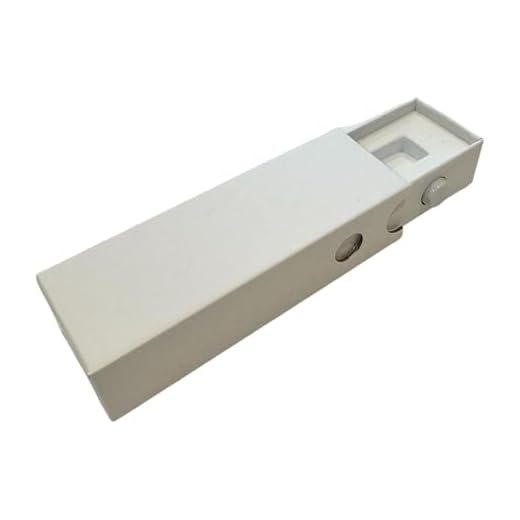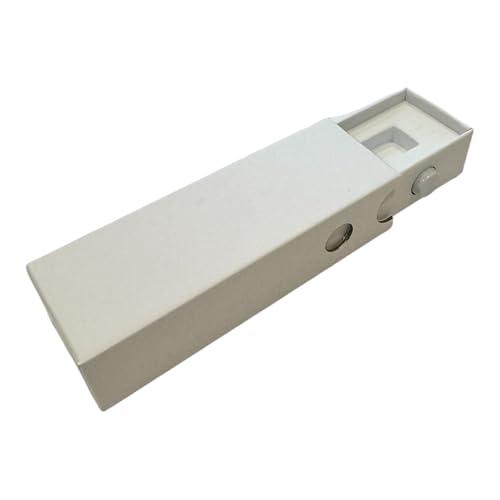

TSA policy: electronic vaping devices are not allowed in the aircraft hold and are permitted only in cabin baggage. Spare lithium batteries are also forbidden in hold bags and must travel in the cabin with terminals insulated or in original packaging. Devices with integrated batteries should remain in carry-on during screening and boarding.
Cartridges and liquids: prefilled cartridges and e-liquids count toward the 3-1-1 carry-on liquid rule – individual containers must be ≤100 ml (3.4 oz) and all containers must fit inside a single quart-size clear bag for inspection. Oversized containers risk seizure during security checks.
Legal risk (domestic): marijuana remains illegal under U.S. federal law; Transportation Security Administration focuses on threat detection but will refer suspected illegal substances to local law enforcement. Hemp-derived CBD products are federally permitted only when THC content is ≤0.3% by dry weight; state statutes vary and interstate transport of regulated products may create legal exposure.
International travel: many jurisdictions enforce zero-tolerance rules for cannabis products and related devices. Examples with severe penalties include Singapore, United Arab Emirates, Japan, South Korea and Indonesia – transporting any cannabis-derived item across borders can lead to arrest, imprisonment and large fines.
Battery technical limits: spare lithium-ion batteries under 100 Wh are normally allowed in cabin; batteries between 100 Wh and 160 Wh require airline approval; batteries above 160 Wh are prohibited from passenger carriage. Tape exposed terminals or store spares in protective cases to prevent short circuits.
Practical checklist: keep the vaporizer in carry-on, remove and protect spare batteries, keep cartridges sealed and within the 100 ml limit, carry medical documentation if prescribed and verify the specific airline and destination-country policies before departure. For international itineraries, avoid transporting cannabis-derived cartridges or concentrates at all times.
Are cannabis vape devices allowed in the aircraft hold under U.S. TSA and airline rules?
Recommendation: Transport cannabis vape devices and cartridges only inside cabin carry-on; do not stow in the aircraft hold.
TSA and federal position
TSA rules prohibit electronic nicotine and cannabis vaping devices from being placed in the aircraft hold; they must remain in cabin carry-on. Cartridges or liquids containing tetrahydrocannabinol (THC) can trigger referral to local law enforcement because marijuana remains illegal under federal law; possession onboard or moving between states may result in seizure, fines, or arrest. Hemp-derived products that reliably contain ≤0.3% delta-9 THC are less likely to prompt enforcement but remain subject to inspection and airline discretion.
Battery and airline specifics – exact limits and steps
Lithium-ion battery limits: cells and batteries ≤100 Wh are allowed in cabin without airline approval; batteries >100 Wh and ≤160 Wh require airline approval and are typically limited to two spares. Spare lithium batteries and power banks are forbidden in the aircraft hold and must be carried in the cabin with terminals insulated or in original packaging. Practical steps: remove batteries from devices if possible, isolate terminals (tape over contacts), store cartridges in sealed containers, keep receipts or lab certificates for hemp products, verify departure and arrival jurisdiction laws, and confirm the specific airline’s cannabis policy before travel. For a discreet, regulation-friendly carry option, consider a cabin daypack such as best backpack for amusement parks.
Lithium‑ion battery transport rules for cannabis vape devices
Do not stow lithium‑ion cells for cannabis vape devices in the aircraft hold; transport batteries in cabin carry‑on only, with the device powered off and terminals insulated.
Regulatory thresholds and limits
- Spare lithium‑ion batteries are prohibited in the aircraft hold; they must remain in the passenger cabin.
- Batteries with a rated energy ≤ 100 Wh: permitted in carry‑on without airline approval (subject to airline policy variations).
- Batteries > 100 Wh and ≤ 160 Wh: allowed only with airline approval; typically a maximum of two spare batteries per passenger.
- Batteries > 160 Wh: forbidden from both cabin and hold carriage on passenger aircraft.
- Devices containing non‑removable batteries are generally allowed in the cabin only; check carrier rules before travel.
Practical checklist for safe transport
- Verify battery energy: Wh = (mAh ÷ 1000) × nominal voltage. Example: 3000 mAh at 3.7 V → 3.0 × 3.7 = 11.1 Wh.
- Power off the device fully; engage any physical locks or safety switches.
- Protect terminals against short circuits: use original packaging, individual plastic caps, or cover terminals with strong adhesive tape.
- Store all batteries and the device in carry‑on baggage, not in the aircraft hold.
- If a battery is rated between 100–160 Wh, obtain written airline approval before travel and carry proof of approval in the cabin.
- Avoid charging the device during flight and keep it stowed when not in use.
- For devices with integrated batteries that cannot be removed, follow the same cabin‑only rule and consult the carrier if the rating is high or unclear.
Sources: IATA lithium battery guidance, FAA/TSA policies on electronic smoking devices and lithium batteries; confirm carrier‑specific restrictions before departure.
How to pack cartridges and loose cannabis oil in the aircraft hold to avoid leaks and fire risks
Primary recommendation: place cartridges and loose cannabis oil inside a rigid, lockable metal container lined with oil-absorbent pads; seal the container in a heavy-duty, double-sealed freezer bag and stow the assembly upright in the aircraft hold.
Cartridge preparation: secure factory caps or mouthpiece covers; add one wrap of PTFE (plumber’s) tape to external threads for extra sealing; avoid overfilling–leave ~10–20% headspace in tanks to accommodate pressure changes at altitude; insert each cartridge into an individual hard plastic tube or dedicated cartridge case to prevent crushing and contact between units.
Loose oil handling: transfer oil to screw-cap PET or HDPE vials with chemical-resistant liners; use metal lids or crimp-sealed vials where possible; wrap vials in oil-absorbent sheets (commercial spill pads or laboratory wipes) and place inside secondary sealed bags; avoid thin glass ampoules that can crack under thermal cycling.
Temperature and pressure control: expect ambient temperatures in the aircraft hold to vary; avoid exposure above ~40°C and wide temperature swings that thin oil and increase leak risk; include silica gel packets to reduce humidity and an insulated sleeve if ambient heat is likely.
Leak containment: line the metal container with multiple layers of absorbent material and include spare sealable bags to isolate any compromised item; place cartridges and vials in upright position with dividers to limit movement; double-bag the entire assembly to keep oil contained if a primary seal fails.
Fire-risk mitigation: use a non-combustible outer container (metal tin) and separate stored oils from flammable items such as lighters or aerosol cans; avoid loose placement next to clothing that could fuel a fire; keep quantities small and distributed among containers rather than concentrated in one spot.
Extra precautions: carry a compact spill kit (nitrile gloves, absorbent pads, resealable bags) inside the metal container; inspect seals immediately before travel and again after transit for evidence of leakage.
Legal and customs consequences when transporting a cannabis vaporizer in hold baggage across state or international borders
Avoid transporting a cannabis vaporizer in hold baggage across state lines or international borders: discovery commonly results in seizure, detention, criminal charges, substantial fines and immigration penalties.
United States domestic travel: transporting cannabis across state lines places the matter under federal jurisdiction (Controlled Substances Act). Federal prosecution may be pursued regardless of state legalization; penalties depend on quantity and evidence of distribution and range from monetary penalties to multi‑year prison sentences. Federal agents and local police can execute arrests, seize devices and cartridges, and initiate asset‑forfeiture proceedings. Discovery on federal property (airports, national parks) particularly increases likelihood of federal charges.
International travel: most foreign customs agencies enforce zero‑tolerance policies for cannabinoids. Entry or transit through a foreign jurisdiction with a cannabis product in hold baggage can lead to immediate arrest, prolonged detention, criminal prosecution, heavy fines, deportation and long‑term inadmissibility. Medical authorizations from origin states rarely prevent foreign prosecution; transit through countries with strict narcotics laws multiplies risk even for brief layovers.
Customs and carrier actions: Customs officers have broad search and seizure authority at ports of entry and may inspect bags, electronic devices and personal effects. Airlines may refuse carriage, report infractions to law enforcement, and impose carrier sanctions. A criminal record from such an incident commonly affects visa applications, background checks and future international travel options.
Practical steps to reduce exposure to legal consequences: verify statutes and case law for both departure and arrival jurisdictions; avoid routing through countries with strict narcotics penalties; do not attempt declarations as a shield against criminal enforcement; seek counsel from an attorney versed in federal and international narcotics law before any cross‑border movement of controlled products; consider lawful local procurement at destination where permitted. For unrelated travel preparation topics, consult how to keep dog from getting out of fence.
FAQ:
Can I put a cannabis vape pen in checked luggage when flying within the United States?
Short answer: you should not. Marijuana and THC-containing products remain illegal under federal law, and airport terminals and aircraft are under federal jurisdiction. Transportation Security Administration (TSA) screening is focused on safety, but if agents detect controlled substances they may notify local law enforcement. Many airlines also prohibit putting powered vaping devices and their batteries in checked baggage because lithium-ion batteries can present a fire risk. For these reasons travelers commonly keep any vaping device in carry-on luggage, follow airline battery rules, or avoid bringing THC products at all.
If I’m flying from one legal state to another, can I pack my weed pen in checked baggage?
No. State legalization does not change federal law that governs air travel between states. Transporting cannabis across state lines can expose you to federal charges even when both origin and destination allow cannabis use. Airport property and the aircraft cabin are subject to federal rules, so security or law enforcement could seize the device and any cannabis-containing cartridges. A safer option is to obtain products legally at your destination from a licensed seller rather than carry them through airports.
What rules apply if my vape pen contains CBD or is a nicotine device, and what practical steps should I take before flying (domestic or international)?
Different rules apply depending on what’s in the cartridge and where you are traveling. Nicotine e-cigarettes: airlines and the FAA permit personal e-cigarette devices in the passenger cabin but generally ban them from checked baggage because of the risk posed by lithium batteries. Spare batteries should be carried in your carry-on with terminals protected. THC-containing cartridges: these remain illegal under federal law, so bringing them on flights within the United States is risky. TSA allows hemp-derived CBD products that meet the federal threshold for delta-9 THC (0.3% or less by dry weight), but airlines and state or local laws may impose stricter limits. International travel: many countries prohibit either vaping devices, nicotine liquids, or any cannabis products; some impose severe penalties. Practical steps: before travel, read the TSA and airline policies; verify state or country laws at both ends of your trip; if you have hemp-CBD products, keep original packaging and lab certificates if available to show product content; never attempt to conceal a controlled substance or bypass screening. When in doubt, purchase at your destination from a licensed vendor or leave the product at home.







